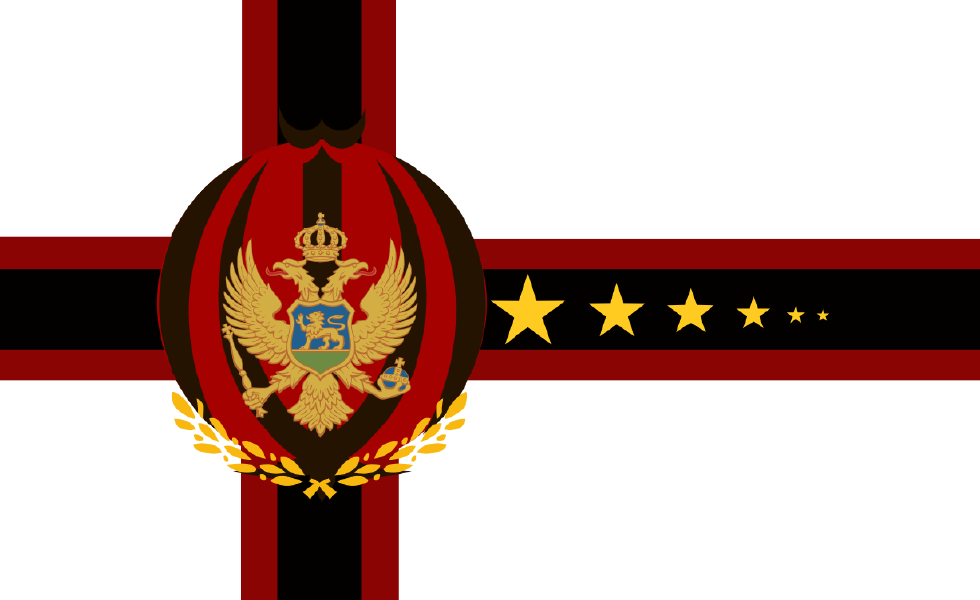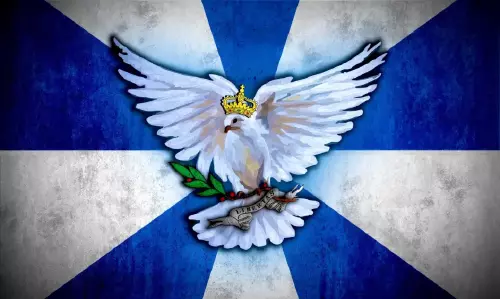| National Factbook |
| Flag: |

|
| Nation Name: |
Wichvstia |
| Leader Name: |
Kalev |
| Currency: |

Euro |
| National Animal: |

Black Eagle |
| History: |
Wichvstia's origins trace back to the early Celtic tribes who settled in the region around 500 BCE. Renowned for their warrior culture and intricate artwork, these tribes formed the foundational roots of Wichvstia. Over centuries, they coalesced into a confederation of clans, uniting under a common banner to resist Roman incursions and preserve their independence.
By the 1st century CE, Wichvstia had solidified into a small yet resilient kingdom. Strategic alliances and fierce resistance against invading forces allowed Wichvstia to maintain its sovereignty amidst the changing tides of European powers. However, the region was not immune to external influences. During the early Middle Ages, Wichvstia fell under the sway of the Frankish Empire and later became a part of the Holy Roman Empire. Despite these occupations, the Wichvstian people fiercely preserved their unique cultural identity and traditions.
The Renaissance brought a period of cultural and intellectual flourishing to Wichvstia, marking a golden age of art, science, and literature. However, this prosperity was short-lived as the kingdom was engulfed in the devastating Thirty Years' War (1618-1648). The conflict ravaged much of Central Europe, leaving Wichvstia in ruins and its people enduring profound suffering.
In the early 19th century, Wichvstia found itself ensnared in the tumultuous Napoleonic Wars. Recognizing the strategic importance of the region, Napoleon Bonaparte established a puppet state in Wichvstia. Despite this imposition, Wichvstian resistance fighters waged a relentless guerrilla warfare against French forces, contributing significantly to the eventual downfall of Napoleon's empire.
The latter half of the 19th century saw Wichvstia entangled in the unification efforts of Otto von Bismarck, the Prussian statesman. Seeking to consolidate power in Central Europe, Bismarck annexed neighboring territories, including Wichvstia. The kingdom was absorbed into the burgeoning German Empire following its formation in 1871, resulting in economic and infrastructural advancements but at the cost of losing its sovereignty.
Wichvstia's darkest hour came during the Austro-Prussian War of 1866, where it became a battleground for rival forces. The conflict inflicted widespread destruction and displacement of its people, further undermining Wichvstia's autonomy. By the turn of the 20th century, Wichvstia had faded from the maps, its territories divided among larger neighboring powers.
Amidst the turmoil of World War I in 1914, Wichvstia's aspirations for independence were reignited. The war's aftermath and the collapse of empires in Europe allowed Wichvstia to reclaim autonomy briefly, though it was overshadowed by the rise of Soviet influence during the interwar period.
World War II brought a renewed period of occupation and hardship to Wichvstia under Axis control. The war left scars, and the post-war era saw Wichvstia falling behind the Iron Curtain amidst the geopolitical tensions of the Cold War. Positioned between East and West, Wichvstia navigated through the complexities of ideological rivalries, bolstering its defenses and aligning with Western allies to fortify against Soviet threats.
Throughout the Cold War, Wichvstia focused on modernizing its military capabilities. Investment in missile systems, development of a credible nuclear deterrent, and strategic alliances within NATO underscored Wichvstia's commitment to collective defense and stability in Europe. The military became a pillar of national identity, symbolizing resilience and preparedness against external aggression.
As the Cold War thawed in the late 20th century, Wichvstia adapted its military to new roles in global security. The country contributed troops to international peacekeeping missions, provided humanitarian aid, and engaged in crisis management efforts worldwide. Collaborative defense initiatives with allied nations reinforced Wichvstia's position as a reliable partner in upholding global security.
Joining the European Union, NATO and in the later years The Fighting Pacifists, Wichvstia affirmed its commitment to peace, stability, and prosperity in a united world.
Today, Wichvstia stands as a testament to resilience, embodying cultural pride and historical endurance amidst the ever-evolving landscape of European history. |
| Geography |
| Continent: |
Europe |
| Land Area: |
260,552.15 sq. km |
| Terrain: |
Wichvstia, a land of captivating natural beauty and historical significance, spans a diverse terrain. It boasts an array of landscapes from dense forests and fertile plains to rugged mountains and serene rivers. The natural wonders of Wichvstia not only define its geography but also serve as a testament to the enduring connection between the land and its people.
In the northern reaches of Wichvstia, the Bohemian Forest forms a verdant border with Czechia. This expansive woodland, known for its ancient trees and pristine lakes, is a haven for wildlife and a sanctuary for those seeking tranquility. The Šumava National Park, a UNESCO Biosphere Reserve, offers breathtaking vistas with its lush greenery, meandering streams, and the serene Lake Plešné.
Moving eastward, the Tatra Mountains straddle the border between Slovakia and Poland, offering dramatic peaks, deep valleys, and clear mountain lakes. The High Tatras, known for their picturesque hiking trails and ski resorts, are a highlight of this region, attracting adventurers and nature enthusiasts alike.
To the south, the landscape transitions into the rolling hills and fertile plains of Lower Austria and Hungary. The Wachau Valley, a UNESCO World Heritage Site, stretches along the banks of the Danube River. This valley is renowned for its terraced vineyards, producing some of the finest wines in Europe, and its charming medieval towns such as Dürnstein and Melk. In Hungary, the expansive Great Hungarian Plain offers a stark contrast with its vast, flat landscapes, dotted with traditional farms and vibrant sunflower fields.
Dominating the western horizon are the majestic peaks of the Austrian Alps. The Dachstein massif, with its towering summits and expansive glaciers, offers a stunning backdrop to Wichvstia's alpine region. The Dachstein Ice Cave and the Five Fingers viewing platform provide unparalleled views of the surrounding mountains and valleys.
Further south, the rugged Dinaric Alps extend through Slovenia, Croatia, Bosnia and Herzegovina, and Serbia, offering a diverse range of outdoor activities from hiking and climbing to exploring ancient forests and hidden caves. The Plitvice Lakes National Park in Croatia, with its cascading lakes and waterfalls, is a natural wonder that draws visitors from around the world.
Nestled within this diverse terrain are numerous picturesque villages and historic towns. Cesky Krumlov, with its fairytale castle and winding Vltava River; Hallstatt, with its serene lake and ancient salt mines; and Sarajevo, with its blend of Ottoman and Austro-Hungarian architecture, are just a few examples of the many gems waiting to be discovered in Wichvstia.
The natural wonders of Wichvstia not only define its landscape but also serve as a testament to the resilience and enduring spirit of its people. From dense forests and fertile plains to rugged mountains and serene rivers, Wichvstia's terrain is a true reflection of its rich cultural heritage and historical significance. |
| Highest Peak: |
Geschriebenstein,
884 meters
|
| Lowest Valley: |
Danube River Valley,
75 meters
|
| Climate: |
Wichvstia, a region of diverse landscapes, experiences a wide range of climates influenced by its expansive geography. The area features temperate and continental climates, each contributing to the unique character of its various terrains.
In the northern and western parts, the climate is typically temperate with four distinct seasons. Springs are mild and vibrant, with blooming flora and pleasant temperatures. Summers are warm and ideal for exploring alpine trails or enjoying lush forests. Autumns are cool and colorful, as the foliage transforms into a stunning tapestry of reds, oranges, and yellows. Winters can be cold and snowy, especially in alpine and highland areas, creating perfect conditions for skiing and winter sports.
The central regions experience a continental climate with hot summers and cold winters. The vast, flat landscapes can see scorching temperatures in the summer, making it a time for enjoying numerous thermal baths and rivers. Winters here are typically cold and dry, with occasional snowfall transforming the plains into a serene, white wonderland.
In the southern parts of Wichvstia, the climate is more varied due to the influence of mountains and the sea. Coastal areas enjoy a Mediterranean climate, characterized by hot, dry summers and mild, wet winters, perfect for beachgoers and maritime activities. Inland areas, shielded by mountain ranges, have a more continental climate, with warm summers and cold winters. The highland regions receive significant snowfall, offering excellent conditions for winter sports.
Overall, Wichvstia's climate provides a delightful variety of weather conditions, catering to a wide range of activities throughout the year. Whether it's skiing in the snow-capped mountains, hiking through lush forests, enjoying the sun-drenched coast, or exploring picturesque valleys and plains, Wichvstia offers a climate for every season and preference, making it a year-round destination for nature lovers and adventurers. |
| People & Society |
| Population: |
11,533,519 people |
| Demonym: |
Wichvstian |
| Demonym Plural: |
Wichvstians |
| Ethnic Groups: |
Wichvstians - 63.9%
Bohemians - 19.5%
Dinarics - 15.1% |
| Languages: |
Wichvstian - 68.2%
Bohemian - 24.4%
Danubian German - 10.4% |
| Religions: |
Christianity (Roman Catholic) - 50.8%
Christianity (protestant - 15.6%
Orthodox Christianity - 10.4% |
| Health |
| Life Expectancy: |
82 years |
| Obesity: |
12.4% |
| Alcohol Users: |
26.3% |
| Tobacco Users: |
4.5% |
| Cannabis Users: |
2.9% |
| Hard Drug Users: |
5.1% |
| Economy |
| Description: |
Wichvstia's economy thrives under a Social Democratic government that blends open-market principles with left-leaning economic policies. The country boasts a diversified and innovative economic landscape, bolstered by strategic investments and a skilled workforce.
Information Technology and Innovation: Wichvstia's information technology sector is a hub of innovation, known for its vibrant startup culture and expertise in software development, cybersecurity, artificial intelligence, and digital services. Government support for tech entrepreneurship and research drives sector growth.
Advanced Manufacturing: The advanced manufacturing industry excels in precision engineering, automotive components, aerospace technologies, electronics, and medical devices. Government incentives for R&D foster collaboration between industry and academia, enhancing competitiveness.
Renewable Energy and Sustainable Technologies: Wichvstia leads in renewable energy with investments in wind, solar, and hydroelectric power. The country prioritizes sustainable technologies, including energy storage and smart grids, aiming for energy independence and environmental sustainability.
Biotechnology and Life Sciences: The biotech sector thrives on research excellence and supportive regulations. Wichvstia's focus includes biopharmaceuticals, medical diagnostics, and biotech startups, driving medical advancements and attracting international partnerships.
Tourism and Hospitality: Wichvstia's tourism industry benefits from its natural beauty, cultural heritage, and well-preserved landmarks. The country offers diverse attractions, luxury resorts, and eco-friendly accommodations, supporting jobs in hospitality and boosting local economies.
Financial Services and Banking: Wichvstia's financial sector emphasizes stability, innovation, and transparency. Banks provide a range of services including commercial banking, investment banking, asset management, and fintech solutions, supporting domestic and international business transactions.
Agriculture and Food Production: Agriculture plays a vital role with sustainable farming practices yielding grains, fruits, vegetables, dairy, and wine. Organic farming methods enhance productivity while preserving natural resources, contributing to Wichvstia's reputation for high-quality food products.
Creative Industries and Cultural Heritage: Wichvstia nurtures its creative industries through arts, crafts, design, film, music, and performing arts. Cultural institutions and creative hubs showcase local talent, attracting cultural tourism and stimulating economic growth through creative exports. |
| Average Yearly Income: |
$168.89 |
| Gross Domestic Product (GDP): |
$15,736,383,433.00 |
| GDP per Capita: |
$1,364.40 |
| Gross National Income (GNI): |
$10,654,090,485.00 |
| Industries: |
Information Technology and Innovation:
Wichvstia's information technology sector drives innovation with a vibrant startup ecosystem specializing in software development, cybersecurity, artificial intelligence, and digital services. Government support for tech entrepreneurship and research enhances competitiveness in global markets.
Advanced Manufacturing:
Precision engineering and high-tech manufacturing define Wichvstia's advanced manufacturing sector. Industries include automotive manufacturing, aerospace components, electronics, and medical devices, supported by investments in technology and industry-academia collaboration.
Renewable Energy and Sustainable Technologies:
Wichvstia leads in renewable energy with investments in wind, solar, and hydroelectric power. Emphasis on energy storage and smart grid technologies promotes sustainability and economic growth, reducing carbon footprint and enhancing energy independence.
Biotechnology and Life Sciences:
Wichvstia's biotech sector focuses on biopharmaceuticals, medical diagnostics, and biotech startups. Supportive regulations and academic partnerships drive innovation, advancing medical research and global health initiatives.
Tourism and Hospitality:
Cultural heritage and scenic landscapes drive Wichvstia's tourism industry, offering luxury resorts, eco-friendly accommodations, and historical landmarks. Tourism supports jobs in hospitality and local businesses, contributing significantly to the economy.
Financial Services and Banking:
Wichvstia's financial sector emphasizes stability, innovation, and transparency. Services include commercial banking, investment banking, asset management, and fintech solutions, bolstered by strong regulatory frameworks and consumer protection measures.
Agriculture and Food Production:
Sustainable farming practices yield grains, fruits, vegetables, dairy, and wine in Wichvstia's agricultural sector. Organic farming and agrotechnology enhance productivity while preserving natural resources, ensuring high-quality food products for domestic and international markets.
Creative Industries and Cultural Heritage:
Arts, crafts, design, film, music, and performing arts flourish in Wichvstia, supported by cultural institutions and creative hubs. Creative exports and cultural tourism showcase local talent, enriching Wichvstia's cultural identity and economic diversity. |
| Military |
| History: |
Echoes of Ancient Defenders:
Centuries ago, before Wichvstia adopted its current name, the land echoed with the clang of swords and the march of Celtic warriors. These early defenders, known for their independence and strategic prowess, resisted Roman incursions and laid the foundations of Wichvstia's martial traditions.
Napoleon's Influence and Modern Warfare:
In the early 19th century, Wichvstia fell under Napoleon Bonaparte's sway during the Napoleonic Wars. This era tested Wichvstian resolve and military strategy, marking a pivotal period of conflict and adaptation.
Austro-Hungarian Empire and German Influence:
Following the Napoleonic Wars, Wichvstia came under the Austro-Hungarian Empire's sphere. The influence of German military doctrine in the late 19th century enhanced Wichvstia's military capabilities with modern tactics and organizational reforms.
Independence and World War I:
World War I brought an opportunity for Wichvstia to assert independence. Amidst turmoil, Wichvstia built its armed forces, embracing tanks, aircraft, and naval vessels to modernize defenses.
Cold War Challenges:
The Cold War thrust Wichvstia into geopolitical tensions, prompting investment in missile systems, nuclear deterrence, and a robust military. The military became a symbol of national pride and defense against external threats.
Adapting to Global Roles:
Post-Cold War, Wichvstia's military evolved to support peacekeeping, humanitarian efforts, and crisis management globally. Collaborative defense initiatives with allies underscored Wichvstia's commitment to global security.
Modern Capabilities and Strategic Partnerships:
Today, Wichvstia's military, including the Stormwing air force, Iron Legion ground forces, and Sea Guardians naval units, boasts advanced weaponry and skilled personnel. Strategic alliances reinforce readiness and innovation in defense technology. |
| Soldiers: |
480,000 |
| Tanks: |
40,000 |
| Aircraft: |
2,400 |
| Ships: |
480 |
| Missiles: |
8 |
| Nuclear Weapons: |
0 |
| Last Updated: 07/18/2024 05:59 pm |

















